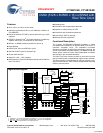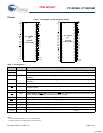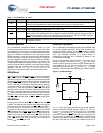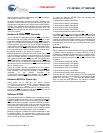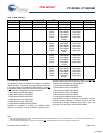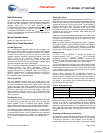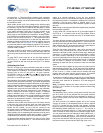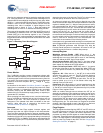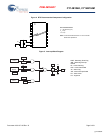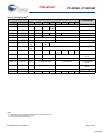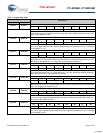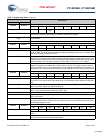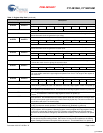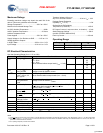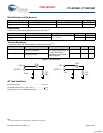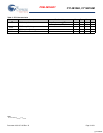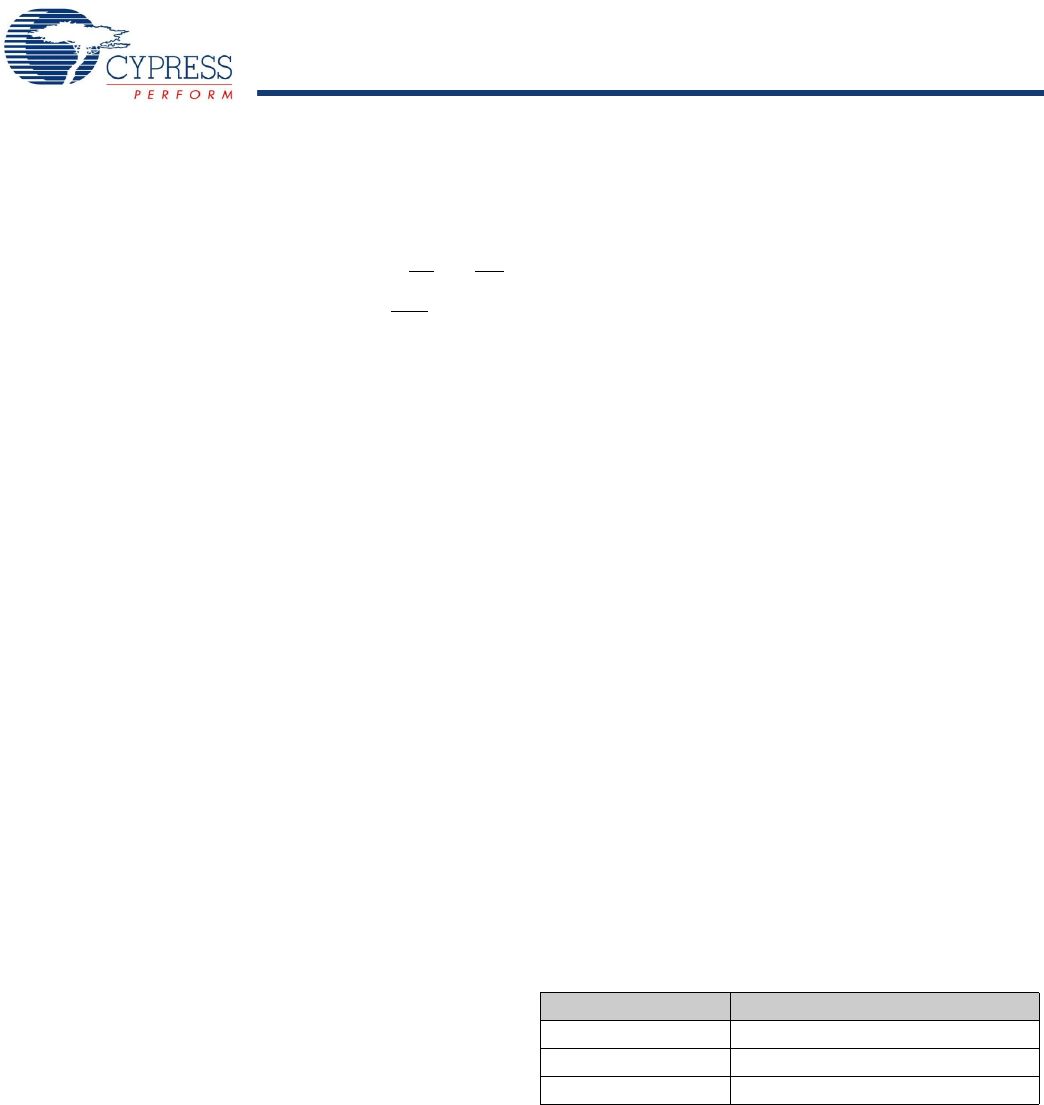
PRELIMINARY
CY14B104K, CY14B104M
Document #: 001-07103 Rev. *K Page 6 of 31
Data Protection
The CY14B104K/CY14B104M protects data from corruption
during low voltage conditions by inhibiting all externally initiated
STORE and write operations. The low voltage condition is
detected when V
CC
is less than V
SWITCH
. If the
CY14B104K/CY14B104M is in a write mode (both CE
and WE
are LOW) at power up, after a RECALL or STORE, the write is
inhibited until the SRAM is enabled after t
LZHSB
(HSB to output
active). This protects against inadvertent writes during power up
or brown out conditions.
Noise Considerations
Refer to CY application note AN1064.
Real Time Clock Operation
nvTIME Operation
The CY14B104K/CY14B104M offers internal registers that
contain clock, alarm, watchdog, interrupt, and control functions.
RTC registers use the last 16 address locations of the SRAM.
Internal double buffering of the clock and timer information
registers prevents accessing transitional internal clock data
during a read or write operation. Double buffering also
circumvents disrupting normal timing counts or the clock
accuracy of the internal clock when accessing clock data. Clock
and alarm registers store data in BCD format.
RTC functionality is described with respect to CY14B104K in the
following sections. The same description applies to
CY14B104M, except for the RTC register addresses. The RTC
register addresses for CY14B104K range from 0x7FFF0 to
0x7FFFF, while those for CY14B104M range from 0x3FFF0 to
0x3FFFF. Refer to Table 4 on page 10 and Table 5 on page 11
for a detailed Register Map description.
Clock Operations
The clock registers maintain time up to 9,999 years in one
second increments. The time can be set to any calendar time and
the clock automatically keeps track of days of the week and
month, leap years, and century transitions. There are eight
registers dedicated to the clock functions, which are used to set
time with a write cycle and to read time during a read cycle.
These registers contain the time of day in BCD format. Bits
defined as ‘0’ are currently not used and are reserved for future
use by Cypress.
Reading the Clock
The double buffered RTC register structure reduces the chance
of reading incorrect data from the clock. The user must stop
internal updates to the CY14B104K time keeping registers
before reading clock data, to prevent reading of data in transition.
Stopping the register updates does not affect clock accuracy.
The updating process is stopped by writing a ‘1’ to the read bit
‘R’ (in the flags register at 0x7FFF0), and does not restart until a
‘0’ is written to the read bit. The RTC registers are then read while
the internal clock continues to run. After a ‘0’ is written to the read
bit (‘R’), all RTC registers are simultaneously updated within
20 ms
Setting the Clock
Setting the write bit ‘W’ (in the flags register at 0x7FFF0) to a ‘1’
stops updates to the time keeping registers and enables the time
to be set. The correct day, date, and time is then written into the
registers and must be in 24 hour BCD format. The time written is
referred to as the “Base Time”. This value is stored in nonvolatile
registers and used in the calculation of the current time.
Resetting the write bit to ‘0’ transfers the values of timekeeping
registers to the actual clock counters, after which the clock
resumes normal operation.
If the time written to the timekeeping registers is not in the correct
BCD format, each invalid nibble of the RTC registers continue
counting to 0xF before rolling over to 0x0 after which RTC
resumes normal operation.
Note The values entered in the timekeeping, alarm, calibration,
and interrupt registers need a STORE operation to be saved in
nonvolatile memory. Therefore, while working in AutoStore
disabled mode, the user must perform a STORE operation after
writing into the RTC registers for the RTC to work correctly.
Backup Power
The RTC in the CY14B104K is intended for permanently
powered operation. The V
RTCcap
or V
RTCbat
pin is connected
depending on whether a capacitor or battery is chosen for the
application. When the primary power, V
CC
, fails and drops below
V
SWITCH
the device switches to the backup power supply.
The clock oscillator uses very little current, which maximizes the
backup time available from the backup source. Regardless of the
clock operation with the primary source removed, the data stored
in the nvSRAM is secure, having been stored in the nonvolatile
elements when power was lost.
During backup operation, the CY14B104K consumes a
maximum of 300 nanoamps at room temperature. User must
choose capacitor or battery values according to the application.
Backup time values based on maximum current specifications
are shown in the following table. Nominal backup times are
approximately two times longer.
Using a capacitor has the obvious advantage of recharging the
backup source each time the system is powered up. If a battery
is used, a 3V lithium is recommended and the CY14B104K
sources current only from the battery when the primary power is
removed. However the battery is not recharged at any time by
the CY14B104K. The battery capacity must be chosen for total
anticipated cumulative down time required over the life of the
system.
Stopping and Starting the Oscillator
The OSCEN bit in the calibration register at 0x7FFF8 controls
the enable and disable of the oscillator. This bit is nonvolatile and
is shipped to customers in the “enabled” (set to 0) state. To
preserve the battery life when the system is in storage, OSCEN
Table 3. RTC Backup Time
Capacitor Value Backup Time
0.1F 72 hours
0.47F 14 days
1.0F 30 days
[+] Feedback



